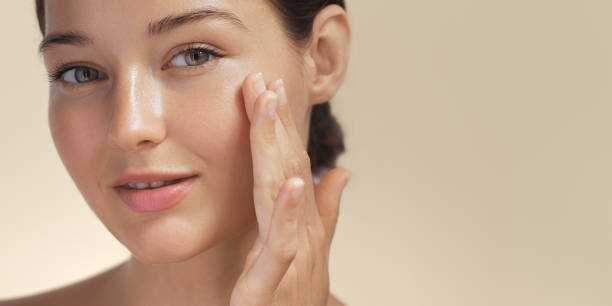Skin Fasting: The Art of Doing Less for Radiant Skin
In a world inundated with multi-step skincare routines and endless product recommendations, a counterintuitive trend is emerging that challenges everything we thought we knew about skin health. Skin fasting, a practice that involves temporarily eliminating or drastically reducing skincare products, is gaining traction among beauty enthusiasts and dermatologists alike. This minimalist approach promises to reset the skin's natural balance, enhance its innate healing abilities, and ultimately lead to a more radiant complexion. As the beauty industry continues to evolve, skin fasting represents a paradigm shift that emphasizes the power of simplicity and the body's inherent wisdom.

In the 1980s, dermatologists began noticing a phenomenon called “steroid addiction syndrome” in patients who overused topical corticosteroids. When these patients stopped using the steroids, their skin initially worsened before improving, suggesting that the skin had become dependent on external interventions. This observation laid the groundwork for understanding how the skin might benefit from periods of “rest” from products.
The Science Behind Skin Fasting
The skin is a remarkably resilient organ with its own regulatory mechanisms. It produces natural oils, maintains its pH balance, and constantly renews itself through cell turnover. Proponents of skin fasting argue that excessive use of skincare products can disrupt these natural processes, leading to dependency and potentially weakening the skin’s barrier function.
During a skin fast, the theory is that the skin “relearns” how to function optimally without external assistance. This process may involve an initial period of adjustment, during which the skin might appear dry, oily, or even break out. However, advocates claim that as the skin recalibrates, it becomes more balanced, resilient, and radiant.
Some dermatologists support the concept, noting that overuse of products can lead to sensitized skin, increased trans-epidermal water loss, and a compromised skin barrier. By temporarily eliminating products, the skin may have an opportunity to repair and strengthen itself.
Implementing a Skin Fast: Methods and Approaches
There are several approaches to skin fasting, ranging from complete product elimination to selective reduction. The most extreme method involves using nothing but water on the skin for a set period, typically ranging from 12 hours to several days. A more moderate approach might involve eliminating all but the most essential products, such as a gentle cleanser and sunscreen.
Some practitioners recommend a cyclical approach, where one fasts for one or two days each week. Others suggest a gradual reduction in product use over time, allowing the skin to adjust slowly. The duration and intensity of a skin fast can be tailored to individual needs and skin types.
It’s important to note that skin fasting is not recommended for everyone. Those with severe skin conditions, acne, or who are using medically prescribed topicals should consult with a dermatologist before attempting a skin fast.
Benefits and Potential Drawbacks
Advocates of skin fasting report numerous benefits, including improved skin texture, reduced sensitivity, and a more even complexion. Some users claim that their skin becomes less oily or less dry after a fast, suggesting that the practice helps normalize sebum production. Others note a reduction in breakouts and a more “alive” appearance to their skin.
However, skin fasting is not without its critics. Some dermatologists argue that certain skincare ingredients, such as antioxidants and sunscreen, are essential for protecting the skin from environmental damage and premature aging. They caution that completely eliminating these products could potentially harm the skin in the long run.
There’s also the concern that skin fasting might not be suitable for all skin types or conditions. Those with dry or sensitive skin, for example, might find that fasting exacerbates their symptoms. Additionally, the initial “purging” period that some experience during a skin fast can be distressing and might deter people from continuing the practice long enough to see potential benefits.
Skin Fasting in the Context of Modern Beauty Culture
The rise of skin fasting represents a broader shift in beauty culture towards minimalism and “skinimalism.” This trend is partly a reaction to the overwhelming array of products and complex routines that have dominated the skincare landscape in recent years. It also aligns with growing consumer interest in natural, sustainable, and low-waste beauty practices.
Skin fasting challenges the notion that more products equate to better skin health. It encourages a more mindful approach to skincare, prompting individuals to question which products truly benefit their skin and which might be unnecessary or even detrimental.
This trend also intersects with the growing focus on skin barrier health in dermatology and skincare. As research continues to unveil the importance of a robust skin microbiome and barrier function, practices that support these natural systems are gaining attention.
The Future of Skin Fasting
As skin fasting gains popularity, it’s likely that we’ll see more research into its effects and potential applications. Some skincare brands are already incorporating the concept into their product lines, offering “fasting” serums or minimal formulations designed to support the skin during periods of reduced product use.
The future might also bring more personalized approaches to skin fasting, with dermatologists and beauty tech companies developing protocols tailored to individual skin types and concerns. As our understanding of the skin’s natural processes deepens, we may see a shift towards skincare routines that work in harmony with these processes rather than attempting to override them.
In conclusion, skin fasting represents a fascinating intersection of ancient wisdom and modern skincare science. While more research is needed to fully understand its benefits and limitations, this trend challenges us to reconsider our relationship with our skin and the products we use on it. As we continue to navigate the complex world of beauty and wellness, practices like skin fasting remind us that sometimes, less truly can be more.





